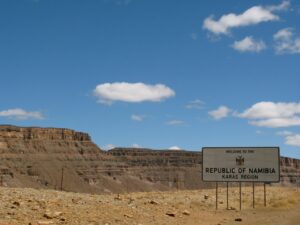[imagesource: Fida Hussain/AFP via Getty Images]
A massive portion of Pakistan is now underwater.
In just a couple of days, with extreme bouts of torrential rain, the death toll soared past 1 100 and water overwhelmed as much as a third of the country, satellite images show.
That means an area roughly the size of the UK has been submerged by monsoon rainfall.
Roads and buildings were washed away, farms and homes were destroyed, and hundreds of thousands have been left stranded after the “absolutely devastating” impact of the flooding.
The UK’s Disasters Emergency Committee (DEC) has since launched an appeal to raise funds for the 33 million people affected, per The Guardian:
Speaking from the north-western Khyber Pakhtunkhwa province, Ahmad said he had been in the country for the 2010 floods, which killed nearly 2,000 people, but this was worse.
“The situation … is absolutely chaos everywhere. People are on the roadside, waiting for humanitarian assistance, like water, food, shelter, and this is unprecedented in the history of Pakistan. In 22 years of my experience as [a] humanitarian aid worker, I never saw such destruction caused by floods.”
Watch the extent of the wreckage in this video from Monday (August 29):
Data captured by the European Space Agency’s Copernicus satellite on August 30 was used to map the extent of flooding:

Summer is monsoon season in the South Asian nation, but this one has been particularly vicious, with climate change a huge potential factor:
Hassanabad Bridge on KKH collapses due to Shishper glacial lake outburst flood in #Hunza #ClimateEmergency #ClimateActionNow #ClimateCrisis #GlobalWarming pic.twitter.com/ANmp1neNZe
— PAMIR TIMES ® (@pamirtimes) May 7, 2022
One of the culprits behind the flooding is likely melting glaciers and snow, per Vox:
“We have the largest number of glaciers outside the polar region, and this affects us,” Pakistan’s climate minister Sherry Rehman told the Associated Press.
“Instead of keeping their majesty and preserving them for posterity and nature,” she said, “we are seeing them melt.”
Pakistan is home to over 7 200 glaciers, and the fact that they’re melting at such an alarming rate has added to the water levels from the rainfall over these last couple of days.
The sad truth is that the country, which is only responsible for a tiny fraction of global greenhouse gas emissions, is at the forefront of the climate crisis:
Right now, Pakistan is at the forefront of the climate crisis. pic.twitter.com/M0iIlMO0Be
— AJ+ (@ajplus) August 31, 2022
The Pakistani government has said the damage from the floods could total around $10 billion, imploring the world to help as it struggles to cope with the impact of a climate crisis it did little to create.
They’ve also asked rich nations to fulfil a pledge they made more than a decade ago to provide lower-income nations with $100 billion a year to adapt to climate change.
Pakistan has received some aid – the UK gave £15 million to help with relief efforts – but not nearly enough to stay afloat.






